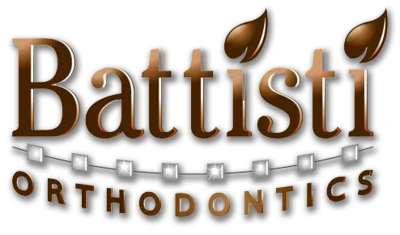About Orthodontics
Healthy teeth and proper jaw alignment is key to your overall health. Teeth that are crooked or crowded in your mouth are challenging to clean and maintain, and can ultimately result in tooth decay, worsen gum disease and lead to tooth loss. Other orthodontic problems can contribute to abnormal wear of tooth surfaces, inefficient chewing function, excessive stress on gum tissue and the bone that supports the teeth, or misalignment of the jaw joints. These can lead to chronic headaches and face or neck pain.
If left untreated, significant, additional dental treatment may be needed, which can very painful as well as costly. For many of our patients, a beautiful smile is the most welcome outcome of orthodontics, but the added health benefits are just important.
Orthodontics for Children It's best for the orthodontist to see children by age 7 to advise if orthodontic treatment is required and the best time for that patient to be treated. The first permanent molars and incisors have usually come in by that time and crossbites, crowding and other problems can be evaluated. When we begin treatment early, we can guide the growth of the jaw and guide incoming permanent teeth. Early treatment can also regulate the width of the upper and lower dental arches and gain space for permanent teeth. In other words, early treatment can simplify later treatment.
Two Phase Treatment There are many advantages to starting treatment at the appropriate time in a child’s development. Doing so often involves a two-phase approach. Two-phase orthodontic treatment is a very specialized process that encompasses tooth straightening and physical, facial changes. The major advantage of a two-phase treatment is to maximize the opportunity to accomplish the ideal healthy, functional, esthetic result that will remain stable throughout your life. What if I put off treatment? The disadvantage of waiting for complete eruption of permanent teeth and having only one phase of treatment for someone with a jaw discrepancy is facing the possibility of a compromised result that may not be stable. First Phase Treatment: Laying the groundwork for a lifetime of beautiful teeth. The goal of first phase treatment is to develop the jaw size in order to accommodate all the permanent teeth and to relate the upper and lower jaws to each other. Children sometimes exhibit early signs of jaw problems as they grow and develop. An upper and lower jaw that is growing too much or not enough can be recognized at an early age. If children after age 6 are found to have this jaw discrepancy, they are candidates for early orthodontic treatment.
Planning now can save your smile later Because they are growing rapidly, children can benefit enormously from an early phase of orthodontic treatment utilizing appliances that direct the growth relationship of the upper and lower jaws. Thus, a good foundation can be established, providing adequate room for eruption of all permanent teeth. This early correction may prevent later removal of permanent teeth to correct overcrowding and/or surgical procedures to align the upper and lower jaws. Leaving such a condition untreated until all permanent teeth erupt could result in a jaw discrepancy too severe to achieve an ideal result with braces. Making records to determine your unique treatment Orthodontic records will be necessary to determine the type of appliances to be used, the duration of treatment time, and the frequency of visits. Records consist of models of the teeth (made by taking impressions), x-rays, and photographs. Resting Period In this phase, the remaining permanent teeth are allowed to erupt. A successful first phase will have created room for teeth to find an eruption path. Monitoring your teeth's progress In other words, at the end of the first phase of treatment, teeth are not in their final positions. This will be determined and accomplished in the second phase of treatment. Selective removal of certain primary (baby) teeth may be in the best interest of enhancing eruption during this resting phase. Therefore, periodic recall appointments for observation are necessary, usually on a six-month basis. Second Phase Treatment: Stay healthy and look great The goal of the second phase is to make sure each tooth has an exact location in the mouth where it is in harmony with the lips, cheeks, tongue, and other teeth. When this balance is achieved, the teeth will function together properly. Movement & Retention At the beginning of the first phase, orthodontic records were made and a diagnosis and treatment plan established. Certain types of appliances were used in the first phase, as dictated by the problem. The second phase is initiated when all permanent teeth have erupted, and usually requires braces on all the teeth for an average of 24 months. Retainers are worn after this phase to ensure you keep that beautiful smile.
Orthodontics for Adults Orthodontic treatment can be successful at any age, and adults especially appreciate the benefits of a beautiful smile. One of every five patients in orthodontic treatment is over 21. Adults may have experienced some breakdown or loss of their teeth and bone that supports the teeth and may require periodontal treatment before, during and/or after orthodontic treatment. Bone loss can also limit the amount and direction of tooth movement that is advisable. Better alignment and long term dental health are major benefits of adult orthodontic treatment.

